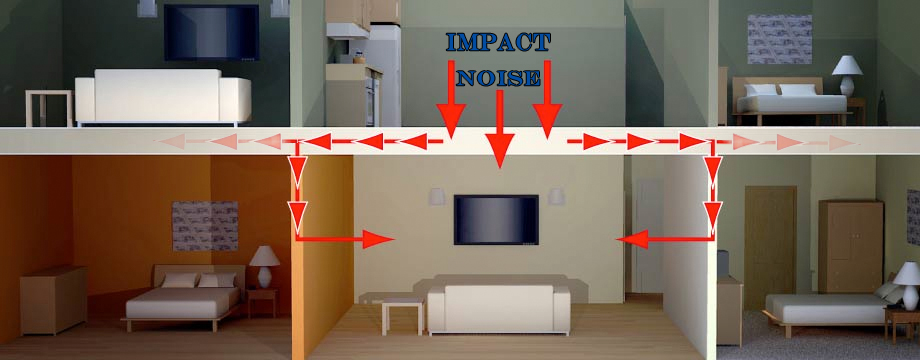How Do You Reduce Noise In Walls?
Sound is the compression and decompression of air that vibrate the eardrum. Some sounds can be welcoming like your favorite song. However, if you are trying to get some peace and quiet in a living space, thin walls can be a pain. You need noise barrier walls. Soundproofing doesn’t have to be difficult. It begins by understanding how sound barriers, and absorption, work differently to help accomplish the objectives of an area. When reducing noise in walls there are different ways to help achieve the desired outcome. Knowing which construction materials to use in different assemblies is vital.
In order to put up a noise barrier wall. You have to decrease the sound transfer between rooms. In order, to that, a resilient channel is needed. A resilient channel is a thin metal channel that attaches to the framework of the wall separating the drywall and weakening the soundwaves. Or you can achieve that isolation with a piece of noise-reducing drywall. Noise-reducing drywall is made with two dense gypsum cores separated by a layer of viscoelastic polymer, making it perfect for reducing interior noise. It is great for use in TV rooms, bedrooms, offices and anywhere you want to block sound. To soundproof, interior walls you need to stop vibrations, and the proper insulation can act as a blocker against unwanted sound. Fill the wall completely with sustainable insulation. Insulation should fill the gaps between walls and the spaces between studs, absorbing sound and breaking the path of noise. To stop noise passing between rooms use it in both interior and exterior walls.
No matter what type of building, acoustics plays a critical part in supporting indoor quality. Sound travels easily through the normal layer of drywall or sheetrock and the wood framing. They are usually the largest point of connection between you and other parts of the building. From an acoustic point of view, it means careful planning with the proper insulation materials and construction. The best time to soundproof and insulate walls are during the build. However, it is possible to add sound barriers to existing walls without ripping off the drywall. With proper insulation and mass, walls can definitely help block out noises. This may still not be enough. Even with appropriate insulation, the noise will still find a way through other, less obvious, open spaces. As a more complete soundproofing solution, full-height walls are recommended. At the very least use wall assemblies that can be adapted with plenum barriers providing additional sound-blocking benefits. From an acoustics perspective, full-height walls are the preferred design approach in almost all situations.
Sound is measured in many ways, one of them is Sound Transmission Coefficient or STC, and each material and product has its individual rating. There are building code rules regarding a room’s acoustics. Merely put, the higher the STC, the better the sound is blocked in an area. For instance, a glass windowpane has an STC rating of about 25, meaning sound can easily penetrate through the material, and an 8-inch concrete wall has an STC of 72, meaning not much noise is getting through it. Properly installed materials such as Silent FX Quick Cut drywall insulation can achieve an STC of 50 or higher.
Un welcomed sound can cause restless nights and stress. If you are planning a project or renovation take the time to guard yourself by installing noise barrier walls. Use noise-reducing drywall, a resilient channel, and construct full-height walls. That will make your living or office space nice and quiet, giving you the peace to live your life.

